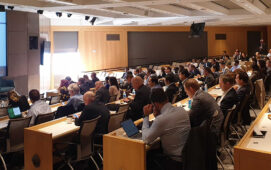One tidbit doing the rounds at our highly successful Intelligent Trading Summit in New York last month was Thomson Reuters’ imminent acquisition of Redi Global Technologies, the OMS/EMS business originally launched by Spear, Leeds & Kellogg then spun off by SLK owner Goldman Sachs to a consortium of investment bank owners, including Bank of America, Barclays, BNP Paribas, Citadel, Goldman and Lightyear Capital.
Last week, Bloomberg News identified Thomson Reuters as being in “late-stage talks” regarding an acquisition for an undisclosed sum. Bloomberg had earlier reported Redi’s valuation at under $200 million. Our understanding is that the deal is very likely to go ahead.
If it does, it would mark the return of Thomson Reuters to an area of the business it has pursued in the past with mixed results. Old-timers may recall with some fondness the Reuters Position-Keeping Service (RPKS), a deal-capture system that pre-ordained today’s more modern OMS/EMS platforms. It also dabbled with a number of other smaller players.
More recently, though, it signed a distribution partnership with Horizon Software for the Asian and specifically Chinese markets. Perhaps, the powers to be at Thomson Reuters have decided that OMS/EMS is a function the company can no longer do without, despite having vocally stated the need for an agnostic stance on this over the past several years.
An acquisition would also present the big data vendor’s audience with an alternative to Bloomberg’s widely used EMSX, viewed by many as the default system particularly for North American equities market access, where it will also find itself competing with the likes of Fidessa, FlexTrade, Portware, Tradair, TradingScreen and others.
Redi itself describes its platform as a “modular, end-to-end trade management platform, [through which] users can execute everything from simple single stock trades to complex strategies across markets and time zones and manage your risk throughout the trade lifecycle.”
According to Redi’s web-site, users have access to its “growing network of nearly 175 execution brokers to route Equities, Futures or Options orders globally, as well as dozens of integrated prime and clearing brokers through our expanding suite of middle office tools.” Its broker and vendor partners, Redi says, “are able to efficiently plug into our platform to reach our community of more than 5,000 active users.”
Stand by for more news on this exciting development.
Subscribe to our newsletter





